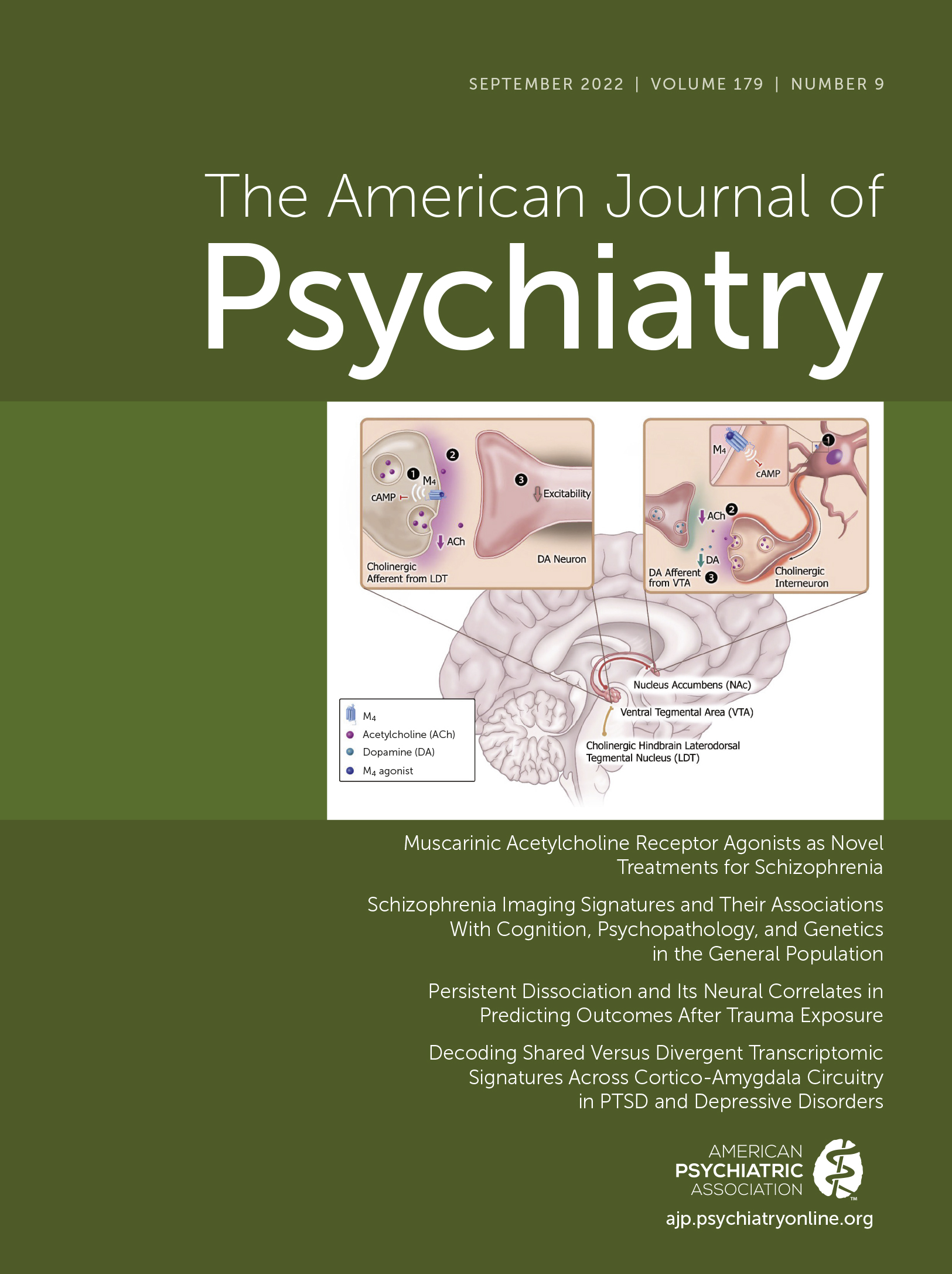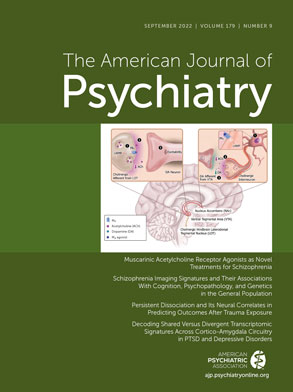To the Editor: We read with interest Dr. Ostacher’s December 2021 editorial (
1) regarding the article “Efficacy and Safety of Lumateperone for Major Depressive Episodes Associated with Bipolar I or Bipolar II Disorder: A Phase 3 Randomized Placebo-Controlled Trial,” by Calabrese et al. (
2). We are pleased to offer context and several points of clarification regarding Dr. Ostacher’s comments concerning both general challenges of bipolar clinical trials and specific points raised in reference to our study.
Diagnosis of bipolar disorder remains a challenge for research as well as in clinical practice. We agree with Dr. Ostacher that diagnosis can be problematic in studies of acute bipolar depression, particularly for subjects with bipolar II disorder. While all psychiatric diagnoses are established on clinical grounds, the sample enrolled in research studies, such as ours, use rigorous methods to enhance diagnostic confidence. In addition to a thorough patient history, determination of eligibility for our study included multiple validated structured assessments including screening using the Mini-International Neuropsychiatric Interview (M.I.N.I.) (
3) and the Montgomery-Åsberg Depression Rating Scale (MADRS) (
4), administered by trained raters. Such methodology offers important, though still imperfect, protection against the modest inter-rater reliability for common psychiatric conditions observed in DSM-5 Field Trials (
5). Additionally, random assignment to parallel treatment groups balances the impact of potential diagnostic errors on clinical trial results. Such errors would be associated with higher placebo response and hence would militate against the detection of drug-placebo effects (
6).
Dr. Ostacher raised concern about the potential influence of functional unblinding. He suggests the imbalance in somnolence (8.5% with lumateperone vs. 1.1% with placebo) and nausea (6.4% vs. 2.1%) could bias raters and possibly exaggerate the true drug-placebo difference. While this is a potential concern, the lumateperone-placebo differences in somnolence (7.4%) and nausea (4.3%) are quite modest, and considerably smaller than some agents used in bipolar disorder, including quetiapine (
7,
8). Nevertheless, to examine this question, we conducted analyses (shown in
Table 1) of the change from baseline in MADRS total score at day 43, excluding patients reporting one or either of these adverse events. As seen in
Table 1, reporting of these adverse events did not influence results in this study, as lumateperone efficacy was nearly the same in the analysis based on all patients (−4.6 points) versus the three other analyses (−4.5 to −4.6 points) which excluded those patients reporting somnolence and/or nausea.
As mentioned above, the potential for functional unblinding was low in our study because the adverse event rate, both relative to placebo as well as in absolute terms, was low in comparison to the adverse event profile reported in studies of other FDA-approved drugs for treatment of bipolar depression (e.g., quetiapine, quetiapine XR, lurasidone, cariprazine), which reported double digit rates of extrapyramidal symptom-related events or somnolence in their Prescribing Information (
7–
10).
Additionally, issues were raised regarding the sample size, effect size, least square mean difference, and confidence interval (CI) of patients with bipolar II disorder. The patient randomization of the study was stratified by bipolar type, which produced two treatment groups of bipolar II patients balanced at baseline. This procedure meets the assumption of ceteris paribus required for fair comparability and assessment of the treatment effect within each bipolar type. Even though the sample size of bipolar II patients was relatively low, the p value for the comparison between lumateperone and placebo was <0.001 for the primary endpoint and <0.01 for the key secondary endpoint, supporting the efficacy of lumateperone in patients with bipolar II disorder. The critique of a wide CI on the treatment effect of lumateperone versus placebo in bipolar II disorder also has little merit. While there was a wide CI for the change from baseline at day 43 in MADRS total score least squares (LS) mean difference in those with bipolar II disorder (LS mean difference, −7.0, 95% CI=−10.92, −3.16; effect size −0.81), the upper bound of −3.16 indicates there is 97.5% confidence that the lumateperone placebo-adjusted effect in bipolar II is at least 3.16 points of change from baseline in MADRS total score.
Maintaining skepticism is appropriate but lingering questions should not obscure the preponderance of evidence provided by rigorous clinical trials. Based on the totality of evidence, the FDA approved lumateperone for the treatment of depressive episodes associated with bipolar I or II disorder as monotherapy and as adjunctive therapy with lithium or valproate in adults in December 2021.
We appreciate the opportunity to respond to the issues raised in the editorial.

